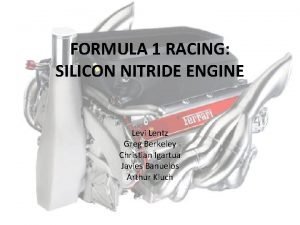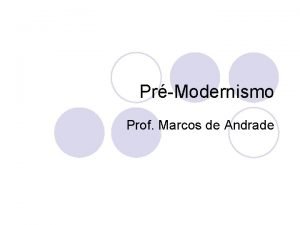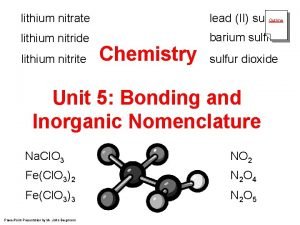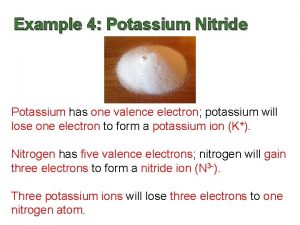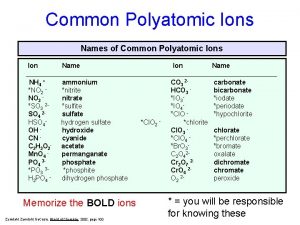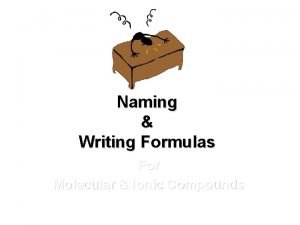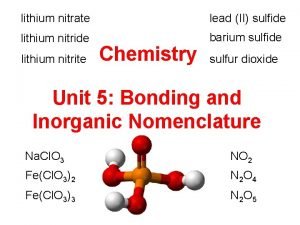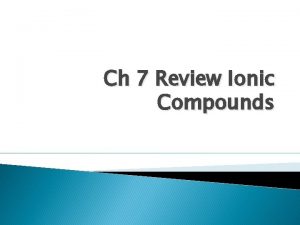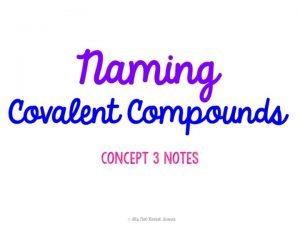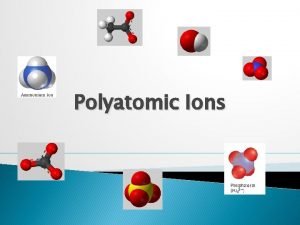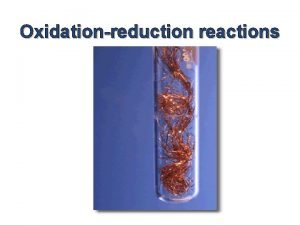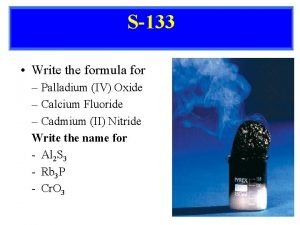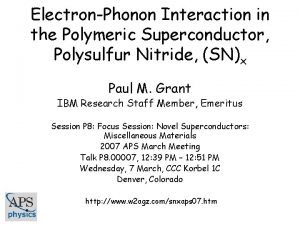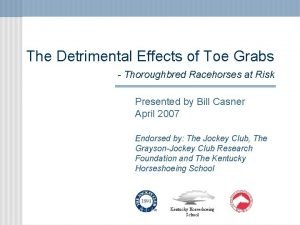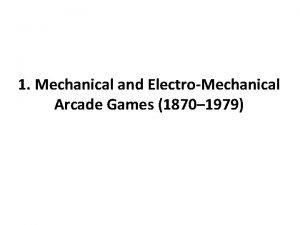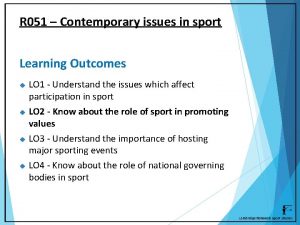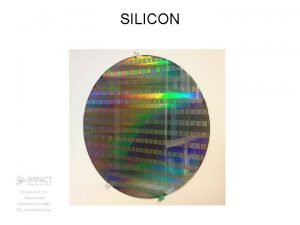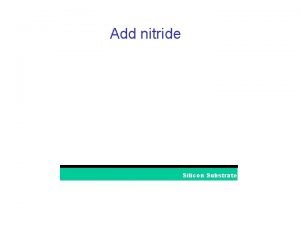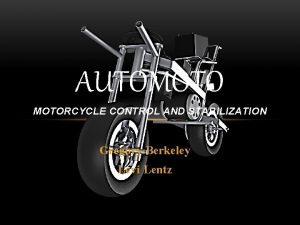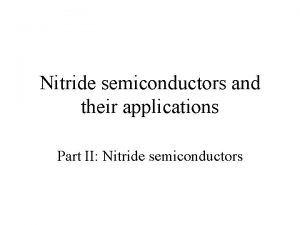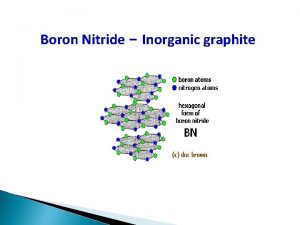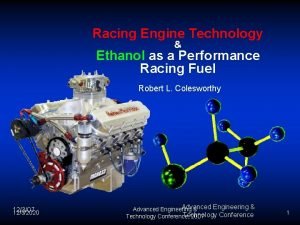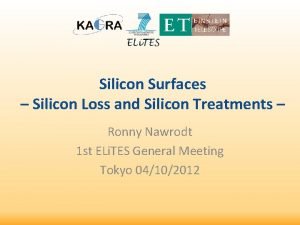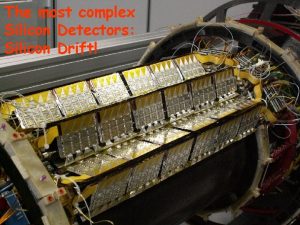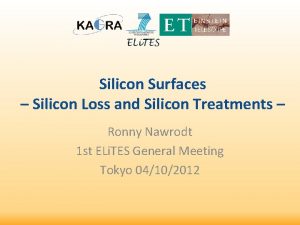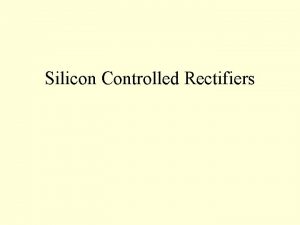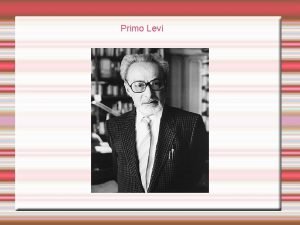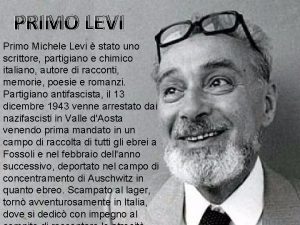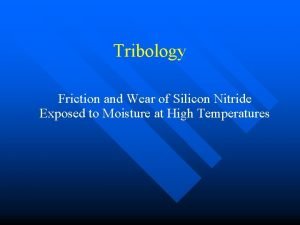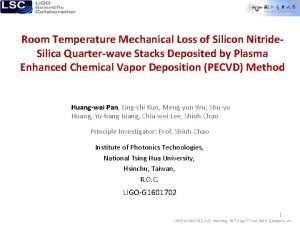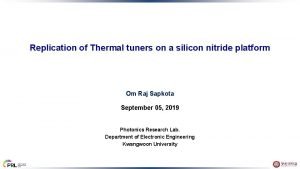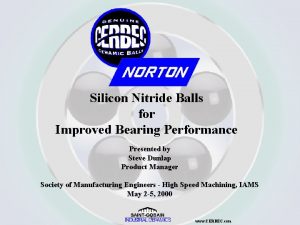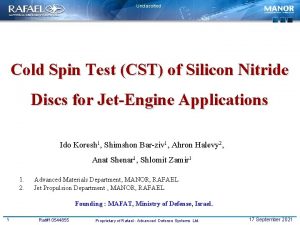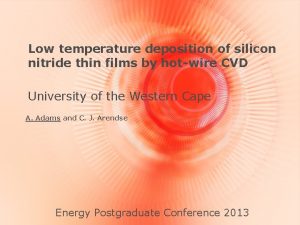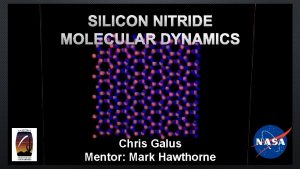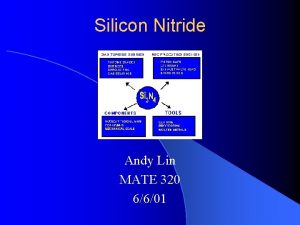FORMULA 1 RACING SILICON NITRIDE ENGINE Levi Lentz




























- Slides: 28

FORMULA 1 RACING: SILICON NITRIDE ENGINE Levi Lentz Greg Berkeley Christian Igartua Javies Banuelos Arthur Kluch

Why a Formula 1 Racing Engine? - Can an internal combustion engine be more efficient by changing the materials used? - Can an internal combustion engine create more power with the same amount of fuel?

OUR COMPETITION The spending per team is as follows: • Mc. Laren Mercedes: $400 M • Toyota: $393 M • Honda : $382 M • BMW Sauber: $378 M • Ferrari: $329 M • Renault: $300 M • Red Bull Racing: $201 M • Williams: $134 M • Super Aguri: $95 M • Midland F 1: $76 M • Scuderia Toro Rosso: $66 M

Design constraints and assumptions • Current rules limit us to use a naturally aspirated 2. 4 L 90 V 8 engine • Our design is limited to the cylinder sleeve/liner and the piston • Analysis performed at 19, 250 RPM


Why Silicon Nitride

Here’s Why Si 3 N 4 Zinc Alloys Mg Alloys Aluminum Sintered. Reaction Bonded Sintered Hot Pressed Zamak 3 Zamak 5 AZ 91 A AZ 91 D 6061 Modulus of Elasticity 300 GPa 130 GPa 45 GPa 68. 9 GPa Shear Modulus 148 MPa 214 MPa 262 MPa 17 GPa 26 GPa Fracture Toughness 5. 0 -8. 0 MPasqrt(m) 7. 5 MPasqrt(m) 4. 5 MPasqrt(m) Thermal Expansion 3. 4 microm/K 3. 1 microm/K 3. 2 microm/K 27 microm/K 26 microm/m*K @ 20 -100 deg. C Same as AZ 91 A 25. 2 microm/m. Deg C Thermal Conductivity 27 W/m-K 22 W/m-K 26 W/m-K 113 W/m*K 110 W/m*K 72 W/m*K @ 100 -300 deg. C Same as AZ 91 A 167 W/m-K 6. 6 g/cm 3 6. 7 g/cm 3 1. 81 g/cm 3 2. 7 g/cm 3 421 deg. C 582 -652 Deg-C No data found 12. 3 2. 1 x 10^7 N*m^MPa*sqrt(m) (3/2) no data found 29 MPa-sqrt(m) Thermal Shock 700 delta. T Deg 800 Delta. T Deg 700 Delta. T Deg Resistance -C -C -C Density 3. 31 g/cm 3 Melting point 1500+ Deg-C 3. 24 g/cm 3 3. 2 g/cm 3 380 -387 deg. C 380 -386 deg. C -Silicon Nitride [SN for short] has high strength, low thermal conductivity and expansion rates -Other alloys have low melting points

MATERIAL ANALYSIS

Internal Pressure Variation Pressure vs. Time 3. 5 3 Pressure (MPa) 2. 5 2 1. 5 1 0. 5 0 0. 00000 0. 000500000 0. 001000000 0. 001500000 0. 002000000 Time (sec) 0. 002500000 0. 003000000 0. 003500000

Cyclic Loading/Material Life • Stress vs Cycles to Failure Stress Amplitude 1000 10 1 1. 00 E+02 1. 00 E+06 1. 00 E+10 1. 00 E+14 1. 00 E+18 1. 00 E+22 Number to Failure

Thermal Stress •

Thermal Analysis Closed Steady State

Maximum Power 33% Efficiency Heat Transfer

39. 4%

Aluminum Piston FEA Results Stress Analysis

Bottom View of Piston

Displacement Results

Bottom View

Silicon Nitride FEA Results Stress Analysis

Displacement Results

Bottom View

Manufacturing Processes • • There a few methods in use today to manufacture SN Hot Pressed SN: Heated to 1800 Deg-C and pushed through a die at 40 MPa of pressure. Only simple shapes possible and expensive. Reaction Bonded SN: Cheaper and capable of complex shapes, but inferior material. Sintered SN: Best material properties, but expensive and high shrink rate (17 -21%). Extra machining needed. Sintered and Reaction Bonded SN: A mating of RBSN and SSN. High quality material, cheaper and capable of complex shapes with little extra machining. Fabrication method of choice.


What is Sintered Reaction Bonded Silicon Nitride? (SRBSN for short!) • Silicon powder packed into a mold, seeded with Beta-SN particles and mixed with sintering additives (Y 2 O 3–Mg. Si. N 2 and Li 2 O). • Powder then undergoes a nitriding process creating SN • Sintering is then applied to further increase material strength and density, but a little material shrinkage occurs (10 -12%).

Benefits of Beta-SN seeding -Increased fracture strength -Increased fracture toughness


What's the cost? • High materials cost and specialized fabrication methods are expensive. • Fabrication time measures in hours because of special material preparations. • Estimated cost per SN part will be $450 per kg. • Pistons will cost about $650 each.

Future Design Considerations • • • Silicon Nitride Works FIA Rules Aluminum-type material Easier to manufacture Similar thermal-properties
 Levi lentz
Levi lentz Levi levi lama sabachthani
Levi levi lama sabachthani Milkau e lentz
Milkau e lentz Control measures of soil erosion
Control measures of soil erosion Examples of self induction
Examples of self induction Quem foi ted lentz
Quem foi ted lentz Lead(ii) nitride
Lead(ii) nitride Inner electrons of potassium
Inner electrons of potassium Co42- ion name
Co42- ion name Barium nitride formula
Barium nitride formula Lead ii nitrite
Lead ii nitrite What is the formula unit of sodium nitride?
What is the formula unit of sodium nitride? Internal combustion engine vs external combustion engine
Internal combustion engine vs external combustion engine Deca silicon trinitride formula
Deca silicon trinitride formula Nitrite nitrate nitride
Nitrite nitrate nitride Copper oxide + hydrogen
Copper oxide + hydrogen Palladium (iv) oxide formula
Palladium (iv) oxide formula Polysulfur nitride
Polysulfur nitride Toe grab
Toe grab Race team sponsorship proposal
Race team sponsorship proposal Rc gent atletiek
Rc gent atletiek Horse racing in georgia
Horse racing in georgia Electromechanical games
Electromechanical games Saftote current results
Saftote current results Sled dog racing and the 5 themes of geography answer key
Sled dog racing and the 5 themes of geography answer key Sailboat racing basics
Sailboat racing basics Examples of spectator etiquette
Examples of spectator etiquette Motorcycle roundup in atlanta
Motorcycle roundup in atlanta Lisa purchases a professional racing bicycle
Lisa purchases a professional racing bicycle
